CHRISTMAS KETTLE STORY
“Truly I tell you, whatever you did for one of the least of these brothers and sisters of mine, you did for me.”
(Matthew 25:40)
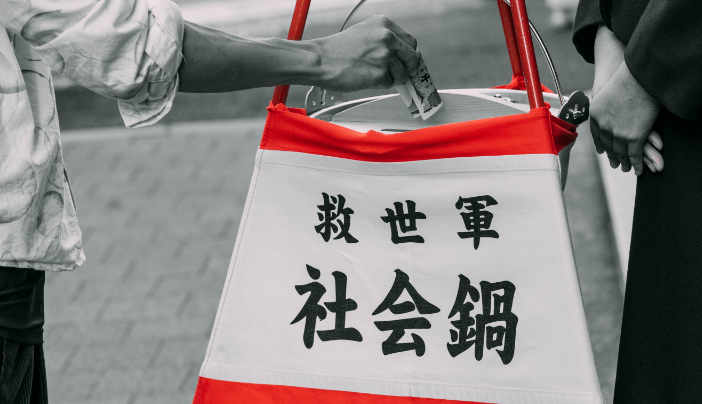
Hello, I'm the Christmas Kettle
Hello, my name is the Christmas Kettle, nice to meet you. As you may already know, my name is the Christmas Kettle. Every year around Christmas, my friends stand on the streets with Salvation Army officers from all over the country and are appreciated by passersby. However, you may not know much about my background, so let me tell you my story. It's nice to be known as an event that announces the arrival of December and is even featured in haiku poetry.
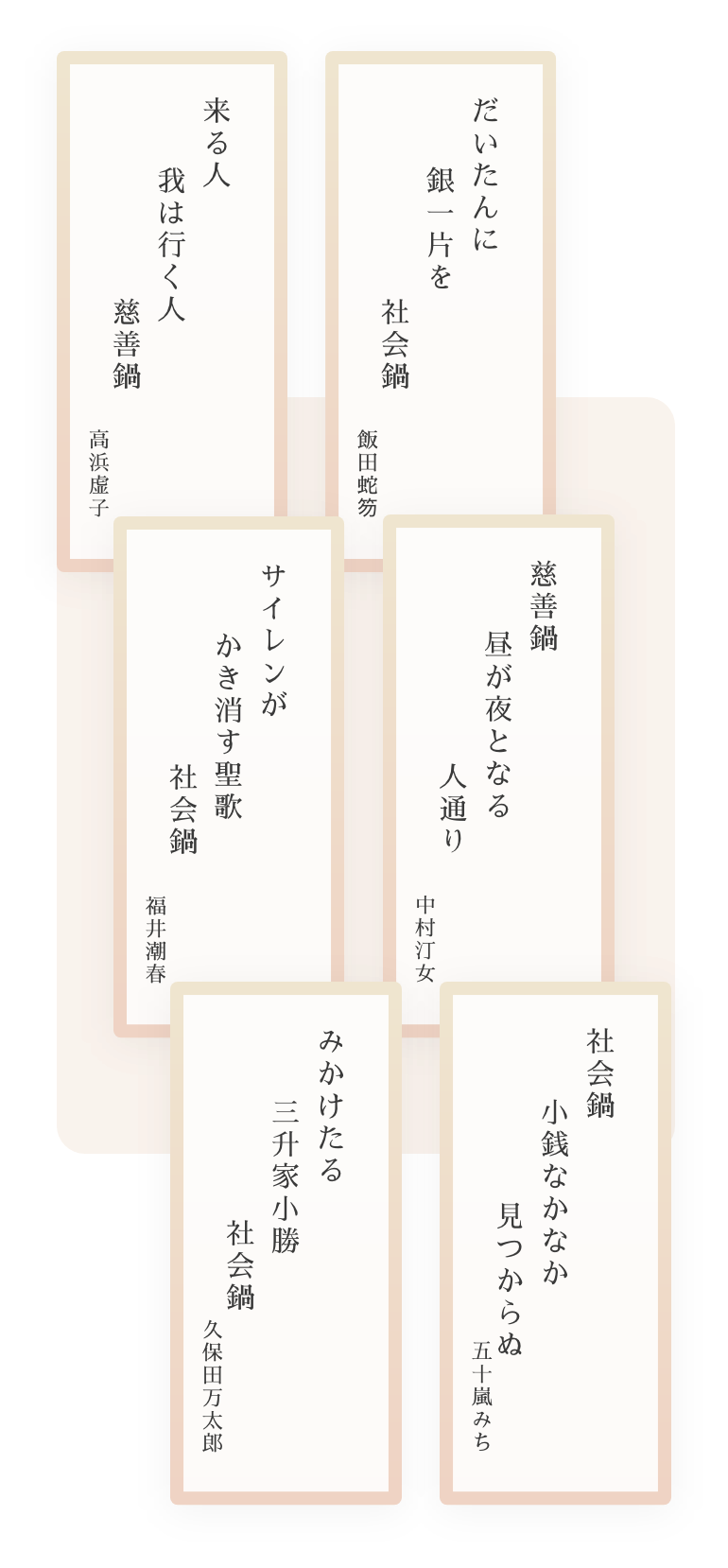
Birth of the Christmas Kettle
My name is the Christmas Kettle. My ancestor was called the “Christmas Kettle,” and our first ancestor was not born in Japan but in San Francisco, USA, during the recession of 1894, about 100 years ago. Trade was sluggish, hundreds of crew members became unemployed, and their families lived a very difficult life.
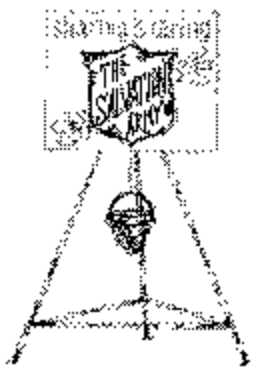
Around that time, Captain Joseph McFee, an officer at the Salvation Army and former sailor, started feeding underprivileged sailors' families with soup, under the order of Commissioner William McIntyre. McFee went to the coastline area where upper-class people lived to ask for donations and was somewhat successful but did not reach the intended budget.
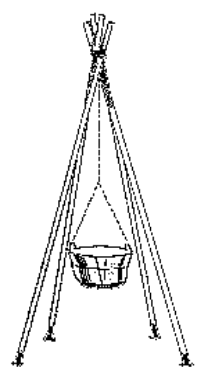
One morning as Christmas approached, McFee saw a black jar for a sailor camp hanging on a tripod in a store window. He bought two, set them up at the entrance to downtown Oakland and Alameda, and hung a sign saying, "Please cooperate with the Salvation Army's soup reception.” Standing by the jar, he shouted, “Please sympathize with the underprivileged sailors,” to passersby. Immediately, sympathy gathered, and coins were tossed into the black jar.
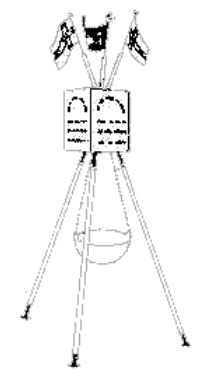
That's how the world’s first “Salvation Army soup reception” started, providing unexpected relief and a happy Christmas to the unemployed sailors' families. This first black kettle was called “Christmas Kettle,” and on December 24, 1895, thanks to the efforts of William McIntyre and N.J. Lewis, the second Christmas Kettle was widely used in the eastern United States, with the slogan “Keep the Pot Boiling” placed beside it.
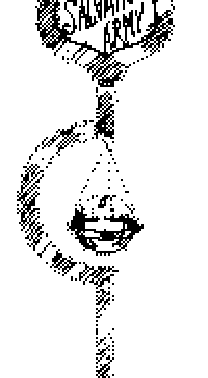
Three years later, a commentary on the “Christmas Kettle” appeared in the New York World newspaper, stating, "This is a state-of-the-art and legitimate appeal." From there, the Christmas Kettle quickly spread around the world.
Then, in 1904 (Meiji 37), the activities of the Christmas Kettle were introduced to Japan.
There are people
that you can save
with your support
With your little compassion, you can help people suffering from poverty and illness, help children to receive education, support disaster victims and more. You can deliver your thoughts to those who need help. Would you like to participate in this donation in the form of support?
Donate Now